
To best understand the user journeys on your website, you should audit the end-to-end process—how users enter, interact with, and exit the site.
After transitioning to the role of UX Conversion Analyst at Clearlink, one of my first projects was to audit the full-funnel user journey experience for a visitor to CableTV.com (CTV). We wanted to solidify what we already knew about our user journeys, uncover what we didn't know, and strategize the best path forward to optimize the experience for our users.
User Journey Audit Project Overview
Role
- UX Researcher/Auditor
Process
- Review user pathways
- Define known journeys
- Explore unknown journeys
- Strategize new opportunities
Tools Used
- Google Workspace
- Google Analytics
- Lucidchart
Objective
This project sought to answer three primary questions for CableTV.com:
- What are our existing and known user journeys?
- What are our unknown user journeys?
- Where do high-priority opportunities exist to better understand user journeys moving forward?
Overview of CableTV.com
Our Vision
Guide our friends to fun.
Our Mission: Connection
Help 75 million people make better TV and internet decisions, so they can connect with the world around them in fun and interesting ways.
Our Personality
Knowledgeable
Enthusiastic
Playful
Bold
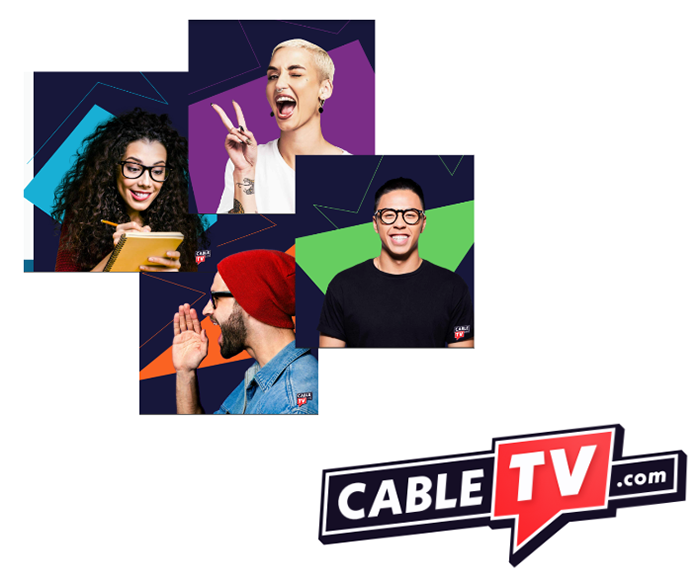
CTV’s User Journey Overview
The first step was to list the reasons why users come to our site and to get an idea of how they currently interact with it. Why and how do they enter the site, how do they navigate the site, and how do they exit the site? Using persona information, site search data, Google Analytics, and Google Tag Manager event data, I compiled the results.

What is the primary reason users come to CableTV.com?
The user...
- Is searching for general information or reviews on a TV/internet provider or streaming service.
- Wants to see the cable TV/internet providers available in their area.
- Is unsatisfied with their current TV, internet or streaming service, and wants to switch providers.
- Is comparing two or more service providers and wants to find a head-to-head breakdown.
- Wants to know the “best” service, provider, or product within the TV/internet/streaming fields.
- Wants to know the price, channel count, download speed, or other feature/spec of a specific TV, internet, or streaming service.
- Is experiencing issues with their cable, TV or streaming service and is looking for a service number or customer support.
- Wants to find out how/where to watch a specific TV show, movie, or televised event.
- Is looking for recommendations on TV shows/movies to watch.
- Is a previous visitor to CTV and is returning to see the latest news and resources.
- Subscribes to the CTV newsletter and is following a link to our site.
- Is following a referral link from social media or another website or blog.
How do users enter, navigate, and exit CableTV.com?
How do users ENTER our site?
Organic search (81.09%)
Direct traffic (6.57%)
Paid search (4.53%)
Referral traffic (1.62%)
Social media (0.08%)
Email (0.03%)
How do users NAVIGATE our site?
Internal links (15.93%)
Zip checks (13.86%)
Main navigation (<1%)
Sub navigation (<1%)
Footer (<1%)
Email signup (<1%)
How do users EXIT our site?
Affiliate links (23.30%)
External links (2.91%)
Hard exit
What Are Our Existing and Known User Journeys?
Next, I mapped out four of our most common and well-known user journeys. Based on our personas/user intent and analytics data, we knew that these were frequent general paths that users took when coming to the site.
To see any of the user flow diagrams larger, click to open them in a separate tab.
Journey 1: Searching for TV or internet services in a particular area
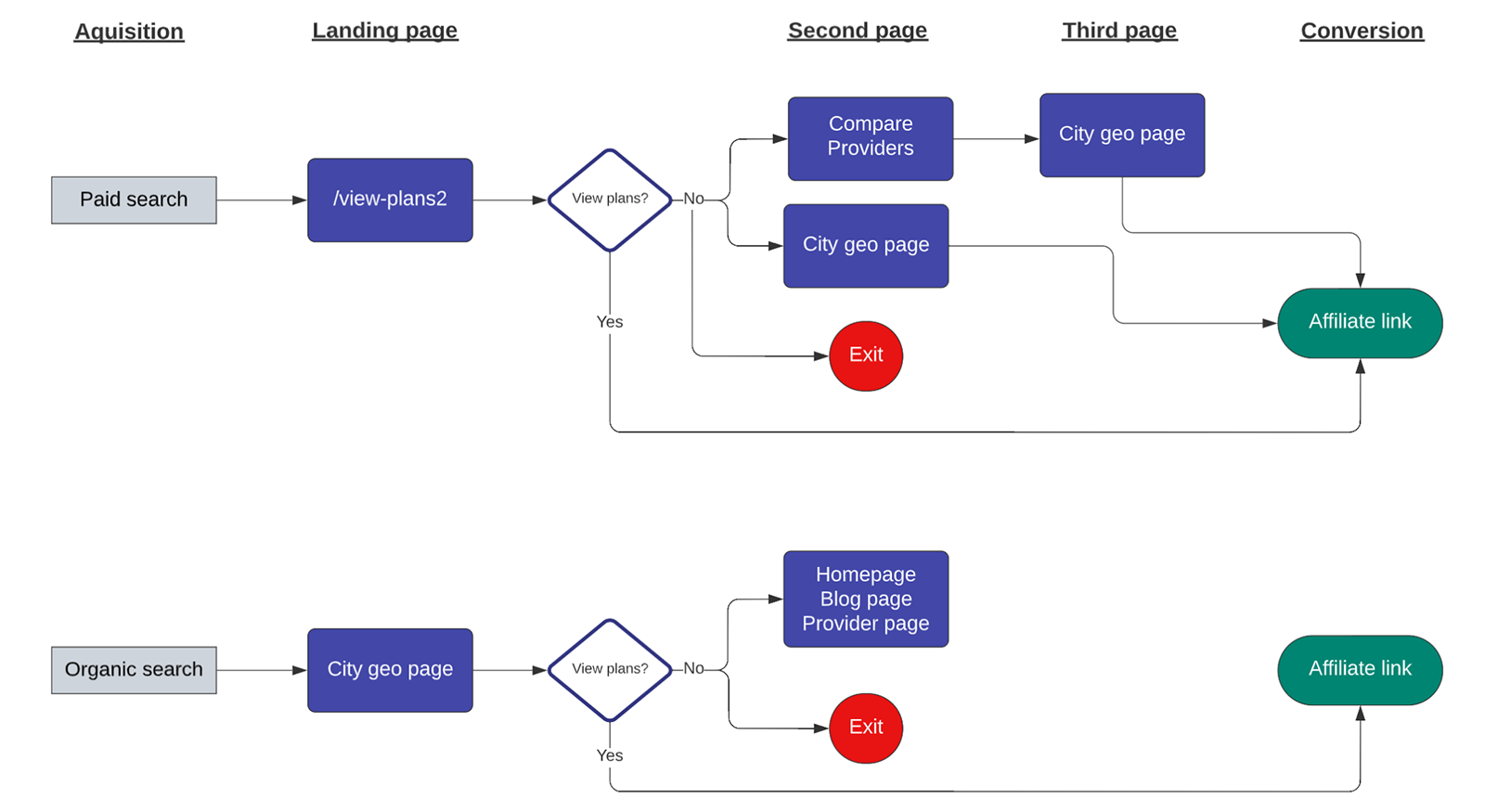
Journey 2: Searching for information about a provider or service
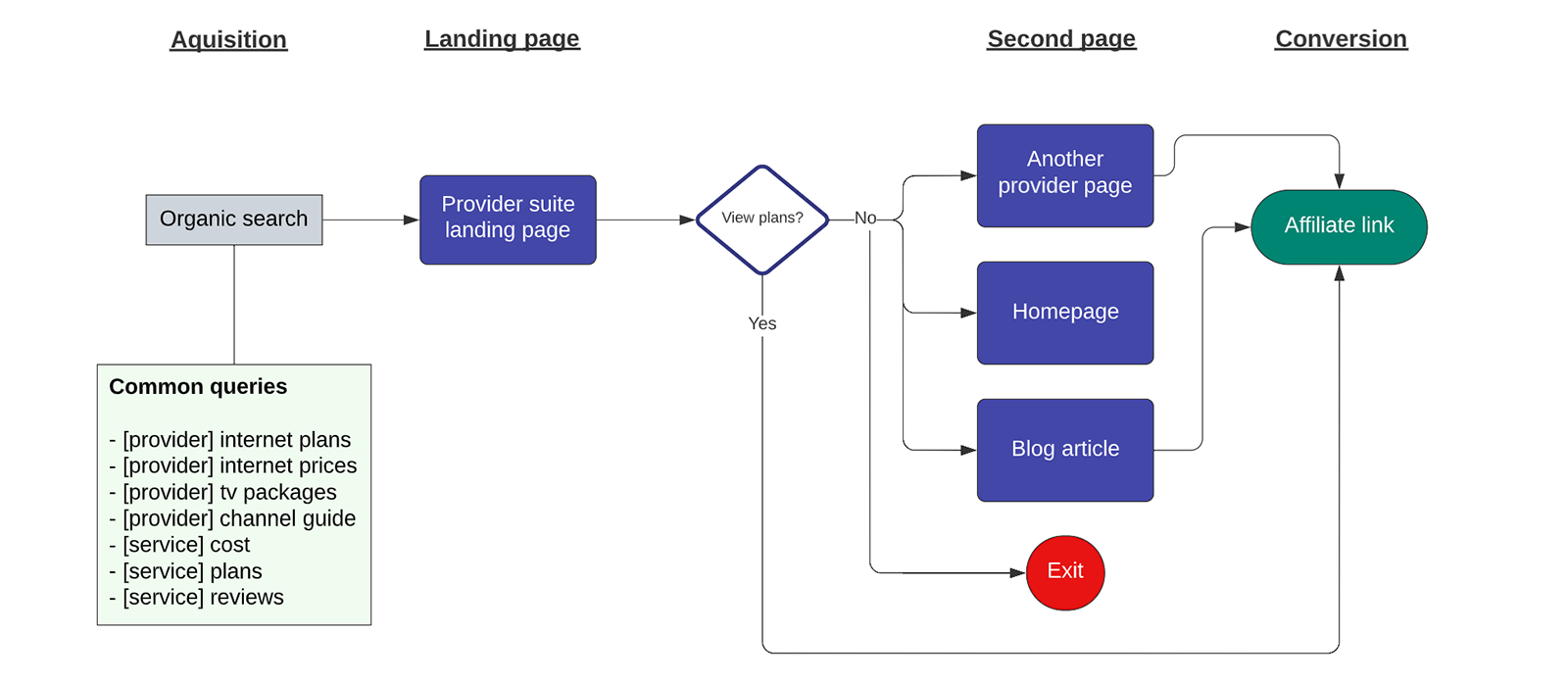
Journey 3: Searching for low-cost internet options
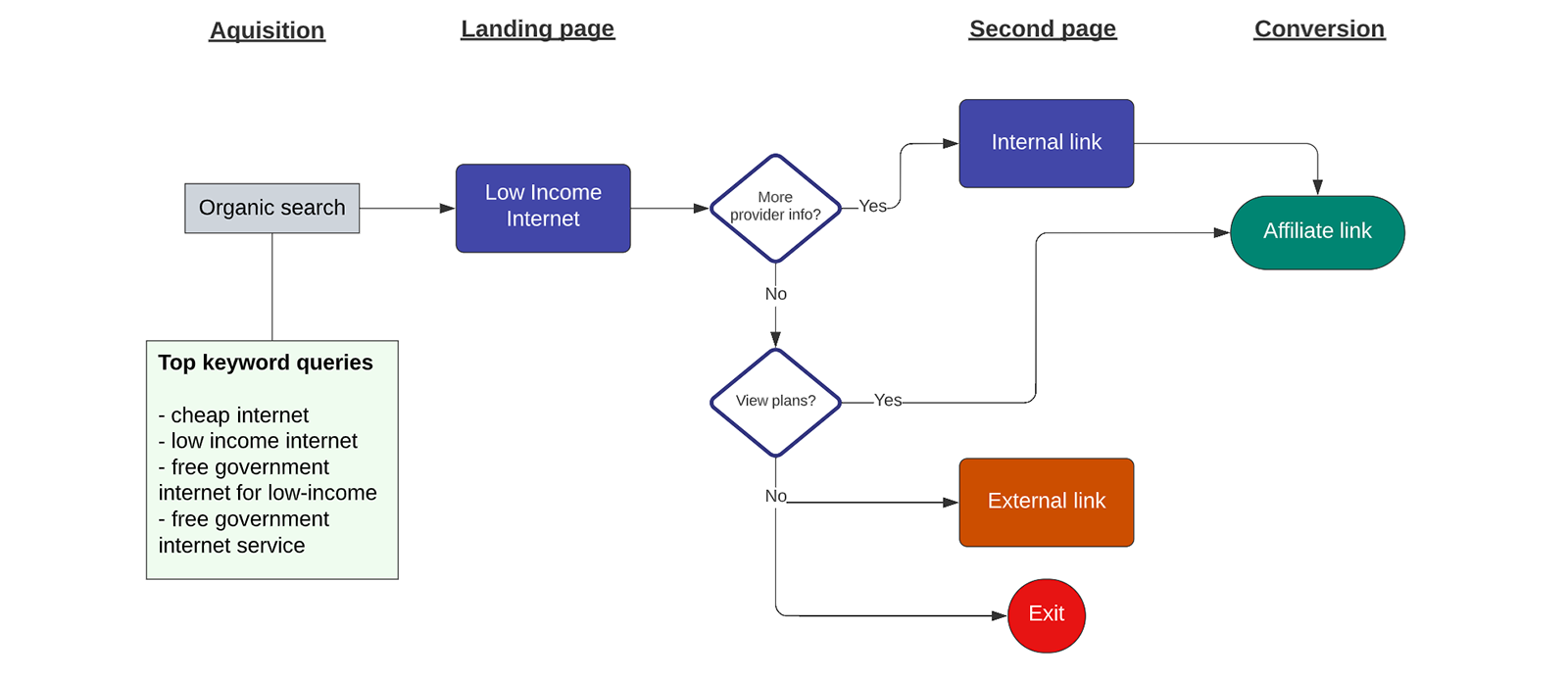
Journey 4: Searching for how/where to watch a specific channel, TV show, movie, or televised event
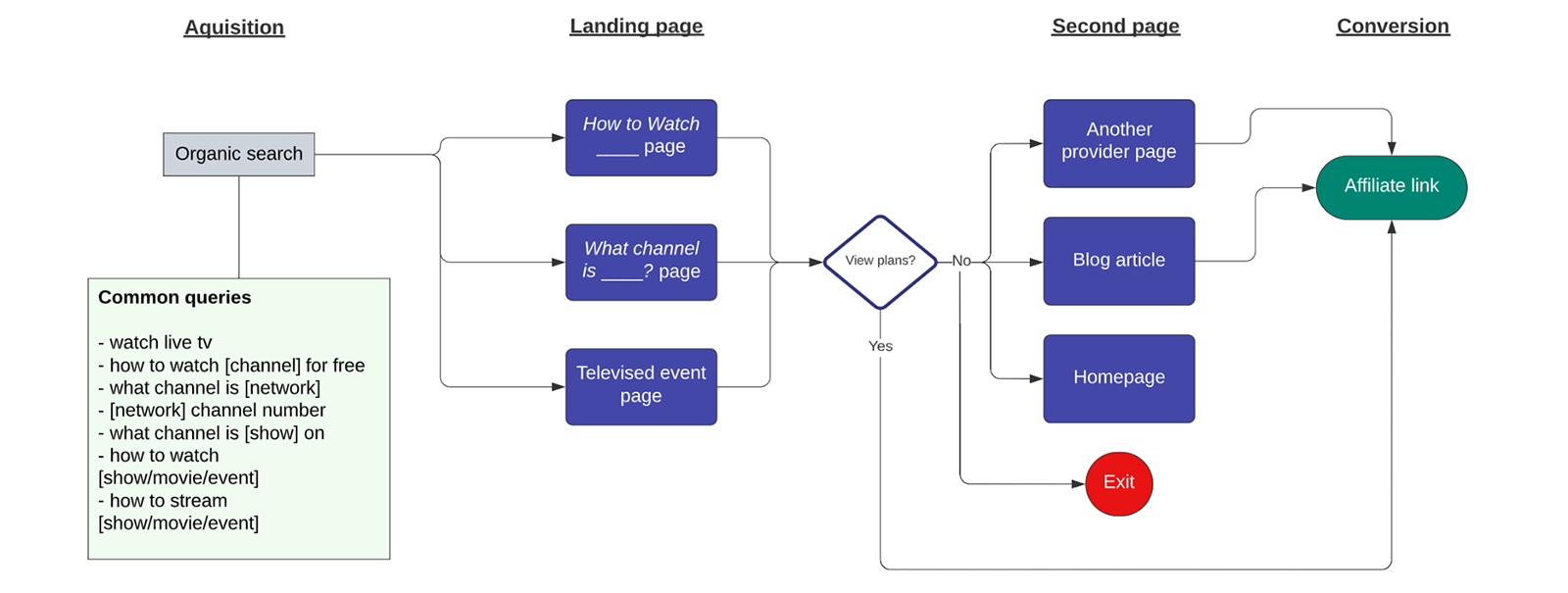
What Are Our Unknown User Journeys?
After looking at known user journeys, I next analyzed further site usage data and content trends to compile a list of potential journeys we don't know as much about.

Top-funnel content
We produce lots of top-funnel agile content—we also have long-established top-funnel articles with good traffic. But we don’t know enough about how users are navigating these paths or if we are effectively meeting their needs.

Return users and direct traffic
Around 10% of CTV traffic is returning visitors, and around 8% of traffic is direct. Which users choose to go directly to the site? For previous visitors, what made them return? These audience segments have higher potential to become loyal followers, so we should make sure their needs are being met.

Sports fans
We have an abundance of sports content and have ramped up production of it over time. Do users coming to view sports content navigate the site differently from other visitors? Do they eventually make their way to other parts of the site? What is the likelihood of this audience converting?

Non-monetized content/brands
We often deprioritize sending traffic to our brand pages that are not monetized. Is it possible we could still reap the benefits of directing traffic to these pages? How best could we shape the journey so that we see ROI?

DPR outreach and fan content
We produce regular outreach pieces that are geared toward our fan persona. Are we providing this audience segment with tangible next steps? Are there ways we could move them further down the funnel? Like with return visitors, this is an opportunity to gain followers.
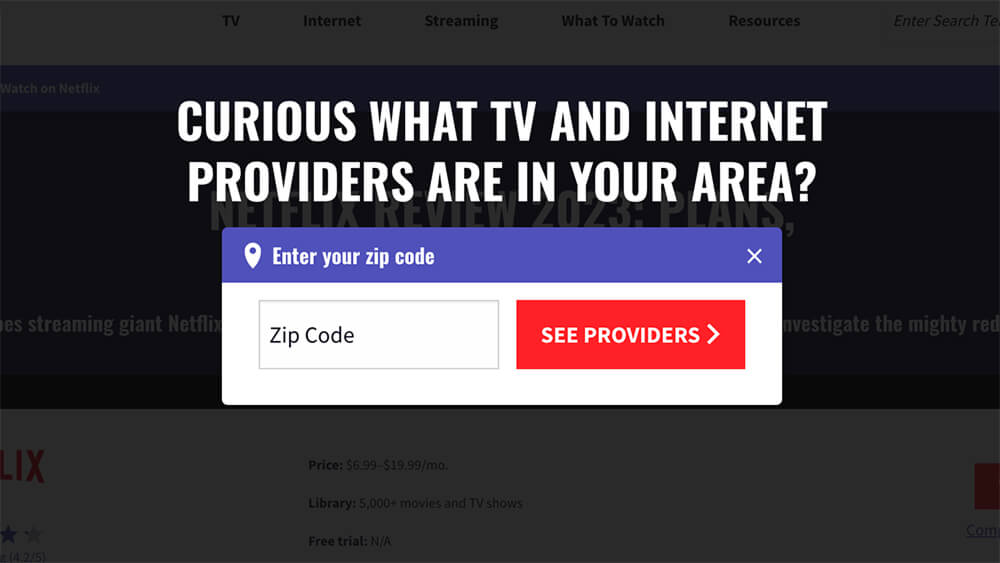
Exit intent popup
Our exit intent popup provides one last opportunity to capture a conversion from the user before they leave a page—but do we know how effective this popup is? Are users who enter their zip code likely to click through to a provider? Are there other types of CTAs we could include that would be better suited to the audience?
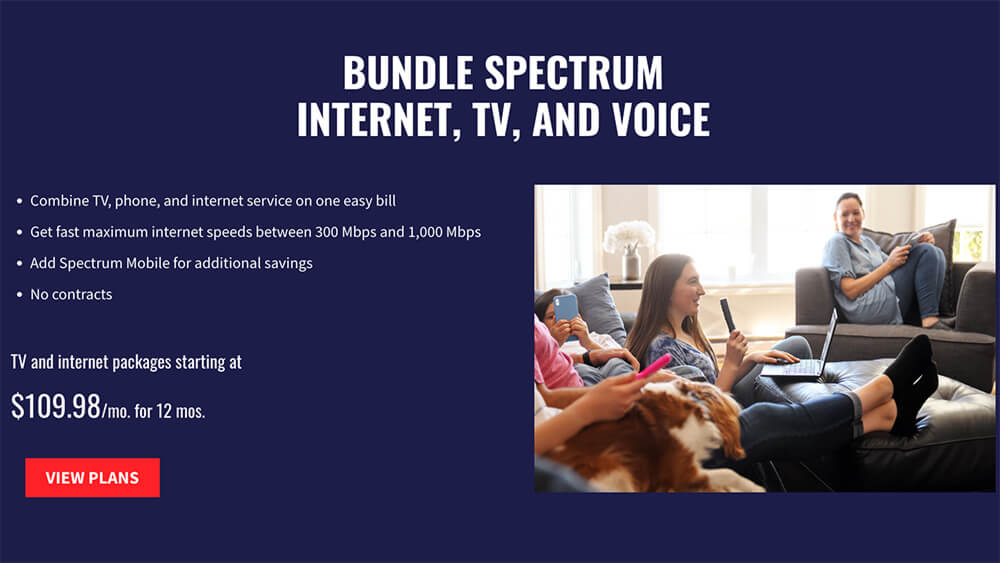
Bundle content
As streaming services continue to rise, has the market for traditional TV and internet bundles fallen off? Are we providing users looking for bundle options with all of the possibilities?
Where Do High-Priority Opportunities Exist to Better Understand User Journeys Moving Forward?
With better knowledge of both our known and unknown user journeys, the final phase of the audit was to identify key opportunities to better understand user journeys and implement strategies to increase success, both for the user and the business.
1. Optimize top-funnel content and next steps specific to funnel stage.
Opportunities for success:
- Clearly define and mark top-funnel content in Airtable.
- Audit existing top-funnel content to see CTAs and next steps offered.
- Examine user paths for top-funnel pages.
- Map page types and KPIs to funnel stage.
- Create exit surveys to ask users if they found what they were looking for.
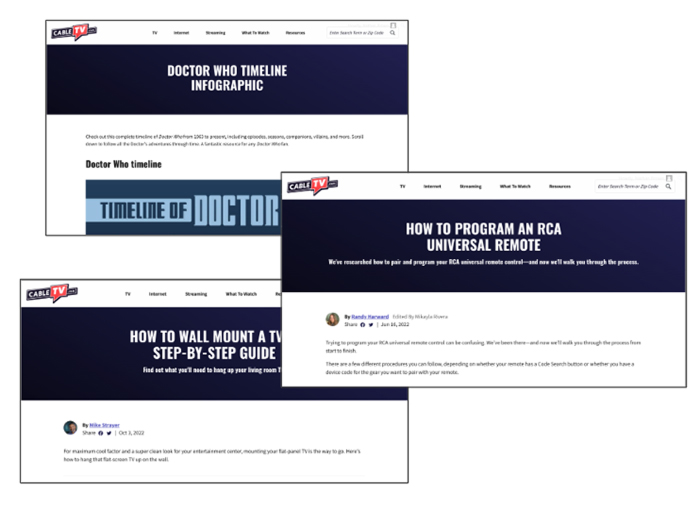
2. Engage our “fan” audience with return-worthy content, features and tools.
Opportunities for success:
- Conduct user interviews to learn more about our fan audience and what content they want most.
- Based on the above research, consider adjusting our fan persona.
- Increase production of regularly updated pages that offer expert opinions and recommendations (i.e., What to Watch).
- Add more pathways for fan content to buyer content, and vice versa.
- Add more tools with unique functionality (i.e., JustWatch).
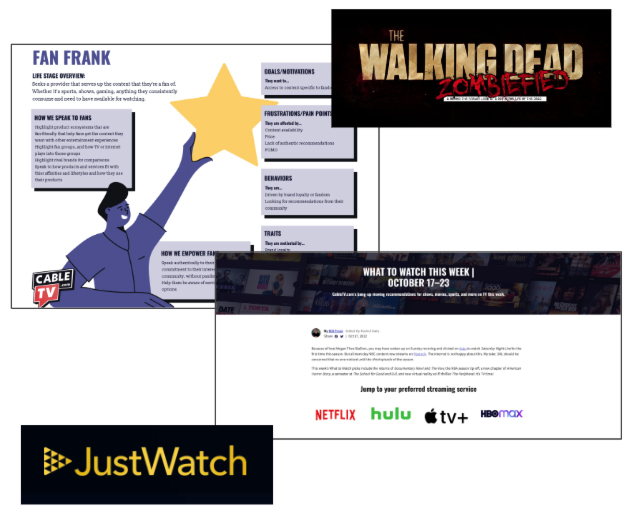
3. Understand user intent and better qualify leads on low-funnel pages.
Opportunities for success:
- Add surveys to ask users what they are looking for on a page.
- Provide pathways for users to learn more about a provider/service before clicking an affiliate link.
- Explore whether more purchase-focused CTA labels lead to higher sales conversions.
- Use the “Check Availability” option to screen out unavailable options.
- List alternatives on the page so that we might attract the user to explore other CTV pages rather than bouncing.
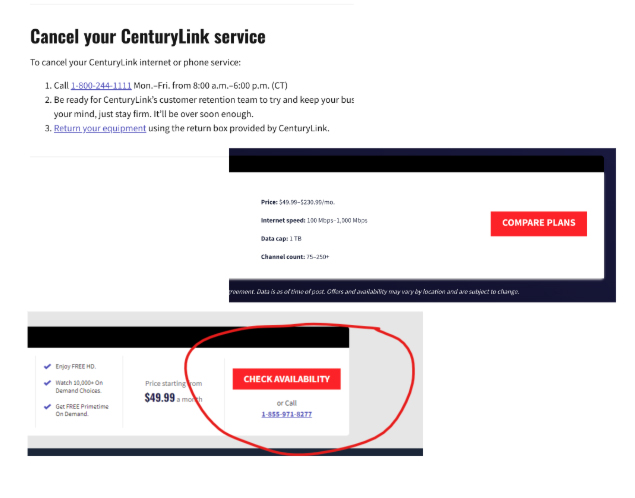
4. Study user behavior and enhance the exit intent popup.
Opportunities for success:
- Add more robust event tracking to see impressions, submits and closes.
- Track whether zip submits from this specific component lead to a higher CTR on geo pages.
- Experiment with different language (heading, description, CTA) to see the effect on engagement.
- Experiment with the popup on different page types and funnel stages.
- Upgrade the component to allow for other types of CTAs or engagement tactics on the popup (internal links, affiliate links, etc).

Questions? Email me at nathanbrown.ux@gmail.com.
